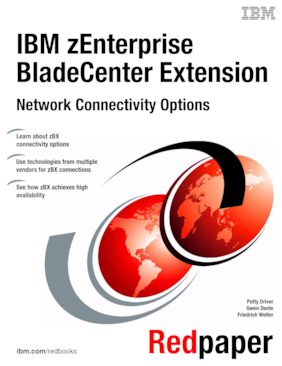
Published on 07 May 2014
Read in Google Books
Share this page:
ISBN-10: 0738453684
ISBN-13: 9780738453682
IBM Form #: REDP-5036-00
Authors: Patty Driver, Gwen Dente and Friedrich Welter
Abstract
This IBM® Redpaper™ publication describes the configuration of the networking equipment that attaches to the IBM zEnterprise® BladeCenter® Extension (zBX), which allows communication with the applications that reside on the intraensemble data network (IEDN). In most cases, the IEDN remains a closed Layer-2 network to maintain a highly available and secure environment that IBM can support. Therefore, when connecting to the IEDN, Layer-3 routed connectivity is still the preferred method. However, now the zBX top-of-rack (TOR) switches support Layer-2 switched connections that can provide an easier migration path when moving data center workloads to the zBX environment.
This paper includes a brief introduction to the IEDN architecture and configuration and how these types of connections work. It also introduces the zBX architecture and explains the implications that network connections can have on the redundancy and high availability setup for this system. Finally, this paper provides concrete examples for connecting the IEDN and external data network through zBX for both Layer-3 routed and Layer-2 switched connection configuration options.
This paper is intended for network architects and network administrators who are responsible for designing and implementing zBX network configurations. It is assumed that you have a basic background in IBM zEnterprise and network concepts.
Table of Contents
Chapter 1. Introduction
Chapter 2. High availability architecture of zBX switches and blades
Chapter 3. Layer-3 configuration options
Chapter 4. Layer-2 configuration options
Chapter 5. Summary